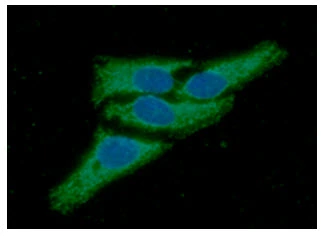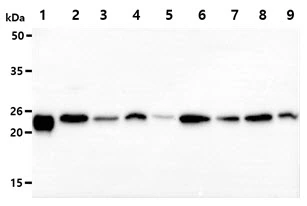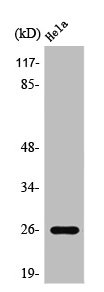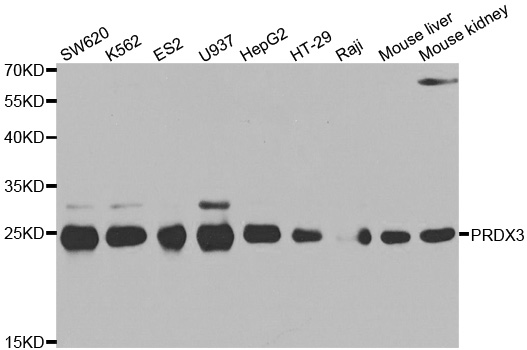
ICC/IF analysis of HeLa cells using GTX57660 PRX III antibody. Blue: DAPI Green: Primary antibody Dilution: 1:100
PRX III antibody [AT1F8]
GTX57660
ApplicationsImmunoFluorescence, Western Blot, ImmunoCytoChemistry
Product group Antibodies
TargetPRDX3
Overview
- SupplierGeneTex
- Product NamePRX III antibody [AT1F8]
- Delivery Days Customer9
- ApplicationsImmunoFluorescence, Western Blot, ImmunoCytoChemistry
- CertificationResearch Use Only
- ClonalityMonoclonal
- Clone IDAT1F8
- Concentration1 mg/ml
- ConjugateUnconjugated
- Gene ID10935
- Target namePRDX3
- Target descriptionperoxiredoxin 3
- Target synonymsAOP-1, AOP1, HBC189, MER5, PPPCD, PRO1748, SCAR32, SP-22, prx-III, thioredoxin-dependent peroxide reductase, mitochondrial, antioxidant protein 1, epididymis secretory sperm binding protein, peroxiredoxin III, protein MER5 homolog, thioredoxin-dependent peroxiredoxin 3
- HostMouse
- IsotypeIgG3
- Protein IDP30048
- Protein NameThioredoxin-dependent peroxide reductase, mitochondrial
- Scientific DescriptionThis gene encodes a mitochondrial protein with antioxidant function. The protein is similar to the C22 subunit of Salmonella typhimurium alkylhydroperoxide reductase, and it can rescue bacterial resistance to alkylhydroperoxide in E. coli that lack the C22 subunit. The human and mouse genes are highly conserved, and they map to the regions syntenic between mouse and human chromosomes. Sequence comparisons with recently cloned mammalian homologs suggest that these genes consist of a family that is responsible for the regulation of cellular proliferation, differentiation and antioxidant functions. This family member can protect cells from oxidative stress, and it can promote cell survival in prostate cancer. Alternative splicing of this gene results in multiple transcript variants. Related pseudogenes have been identified on chromosomes 1, 3, 13 and 22. [provided by RefSeq, Oct 2014]
- Storage Instruction-20°C or -80°C,2°C to 8°C
- UNSPSC12352203





